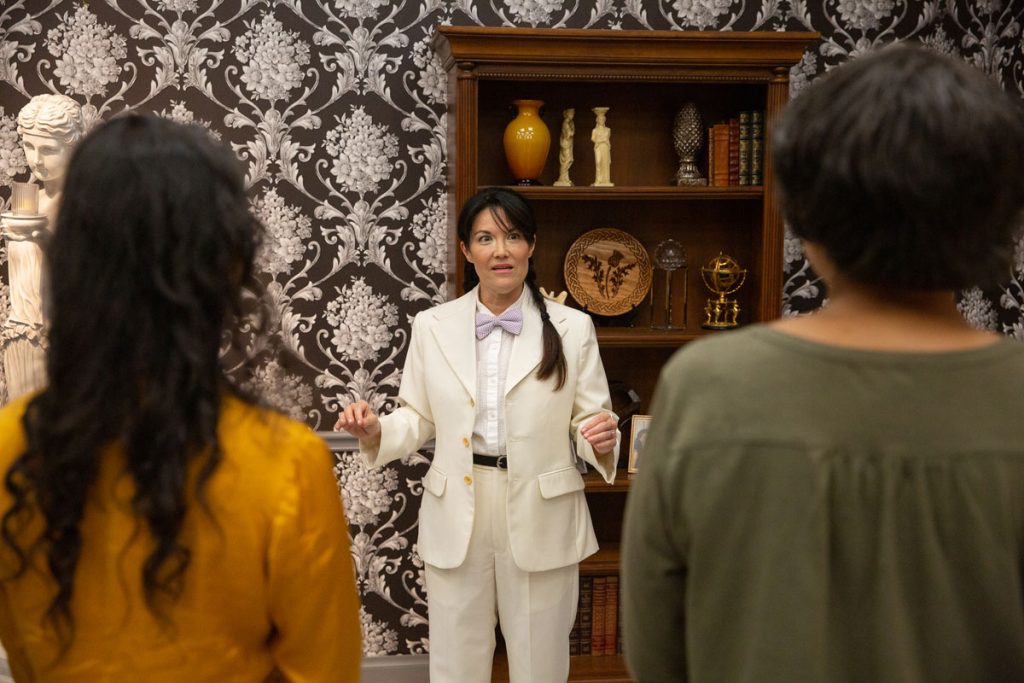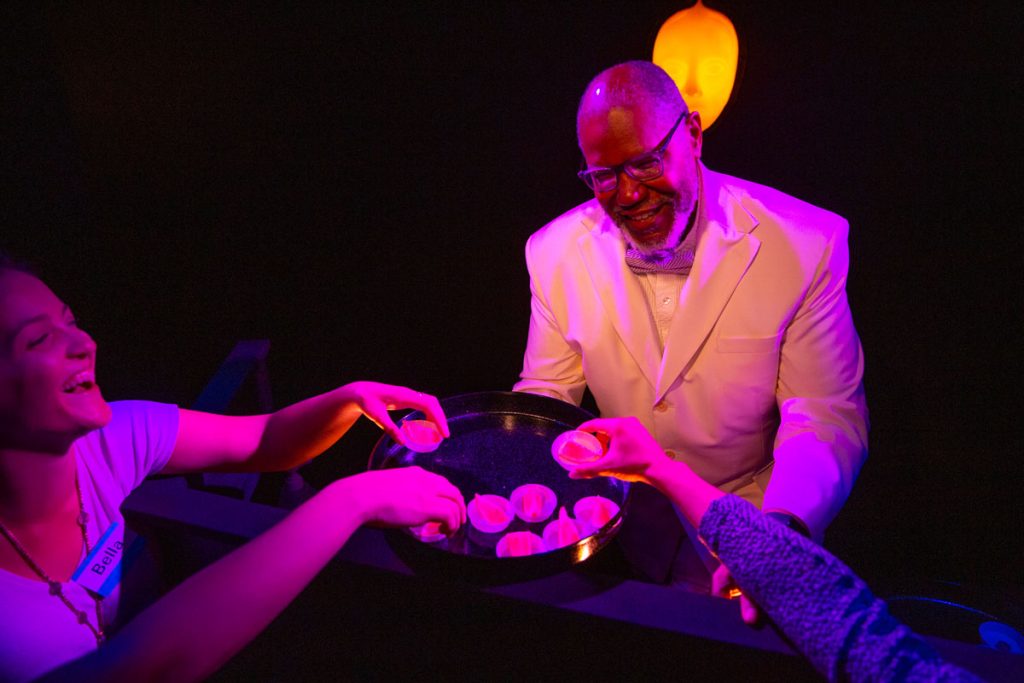What follows is my reflection on David Byrne and Mala Gaonkar’s Theater of the Mind, which I saw six months ago, and while it moved me, I haven’t until now taken the time.
In the grand scheme of things, I’m not much of a Byrne-aphile. I did see Talking Heads on their second album tour in 1978, at the Roxy (did not get the USA-shaped souvenir badge, dang it), and at The Palladium on their 1982 tour—backed by Nona Hendryx, for whom my band Age of Consent opened a year later. The Heads’ trilogy of collaborations with Brian Eno,1 as well as Eno’s album with Byrne,2 are my favorites. Later, in 1986 at the Doolittle Theatre, I saw The Knee Plays, Byrne’s contribution to Robert Wilson’s (unrealized) the CIVIL warS. And I did have one slight encounter with Byrne in 1983, which I recount here. But as Byrne got expansive, I was just as happy with Eno retreading the Heads’ “Listening Wind” twenty-five years later via his shell-shocked “Bone Bomb.”
Watching late-night Denver news at my cousin Suzie’s in January, before I visited my wife Andrea Carney in Minnesota and moved to my apartment here at Sloan’s Lake, I saw this promo (or something like it):
The ad echoed the chuckle-y side of Byrne that I’d ignored, but I thought they might be giving away tickets at this point, since the ad was in heavy rotation. I looked and secured one of the last tickets on the last weekend, full price. I learned later the production had been extended last November due to popular demand—twenty-one weeks in all.
Live from Off-Center
The world premiere of Theater of the Mind was staged “off-center” by the Denver Center for the Performing Arts in the York Street Yards at the west edge of the Clayton neighborhood.3 Arriving early on January 20, I recognized the lot as the final resting place of P&L Printing, an IWW union shop that closed years ago. In two strips of low brick warehouses (a former Army medical supply depot), TOTM occupied a fair portion of one (15,000 s.f.), the set consisting of several rooms.4
Two years after Covid entered the… mm… stage, masks were optional; cell phones were not (lockers provided; I left mine, having paid for a postcard with my new watch, Christmas gift of my brother Richard). Each time slot was limited to sixteen participants. We were given name tags, evidently IDing figures from Byrne’s past.

A living David Byrne avatar, a guide—one of fourteen pictured on the walls of a corridor—emerged from the frame of a piano or organ. Moving us from room to room, ours (Lisa Hori-Garcia) gave us a series of tests of the senses (even taste).
We were made to disbelieve them. But, in the end, the power of doubt was empowering.

“You will experience a different kind of perception,” said Byrne to local journalist John Moore. “You will question your own identity. The hope is that by the end of the journey, you will have a different idea of who you are and how you relate to the world than you did at the beginning.”
I (Don’t) Want to Believe
I Want to Believe is an X Files meme about the supernatural. Going into Theater of the Mind, I had no frame of reference, but I definitely didn’t “want to believe” in the supernaturally prolific David Byrne. And yet, in the last room, we’re asked by Byrne/guide to believe-or-suspend, because, after all, we’ve just been shown several illusions, lapses in our perception. It’s a Byrne bomb; in my case, with delayed action.
Here’s what I wrote to artist Jim Morphesis two days after seeing the work:
It is consistent with Byrne’s goofy, playful side, which I, mm…, tolerate? but the final soliloquy nearly brought me to tears. I’d like to find the script because it was the considered, introspective tone—in a piece that was considered, autobiographical—that wowed me. Every day Andrea calls me to complain about the past, refusing to look forward. Byrne explores the past through the present—a present as wiggly as the past—perhaps liberating us as we take step after step. If we can’t believe our eyes, why be bound by them?
I promised Jim I’d expound on the experience, but six months later, I can’t think of more to add.
Header image:
Annie Barbour in
Theater of the Mind5
Notes
- Fear of Music (1979), Remain in Light (1980), Speaking in Tongues (1983).
- See my commentary on the latter, Acts of Faith: Electric Evangelists 1 and this coda to Part 2.
- Just as MCA Denver’s then-director Adam Lerner pitched DEVO’s Mark Mothersbaugh re a retrospective after the band’s gig at the 2011 Denver County Fair, DCPA Off-Center cofounder Charlie Miller buttonholed Byrne during his 2018 tour stop in Denver. Sometimes all you have to do is ask. (See my discussion of a particular… mm… gem from the Mothersbaugh exhibition in DEVO and “The World’s Largest Ruby”.)
- I’m reminded of a semi-immersive theater production I dragged my parents to in chilly December 1986, which moved from stage to lawn to stage at the Stages Theater in Hollywood: Reza Abdoh’s Rusty Sat on a Hill One Dawn and Watched the Moon Go Down.
- Photo: Matthew DeFeo, courtesy Denver Center for the Performing Arts.

